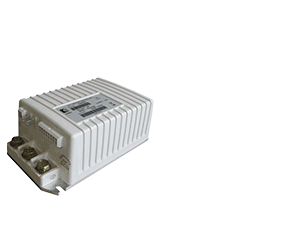Golf courses and businesses that incorporate a fleet of golf cars know that extending the service life of the deep-cycle batteries powering their fleet can significantly lower annual operating costs. But the simple process of regularly recharging batteries with a charger using a constant voltage or a fixed charge algorithm, often leads to a condition called electrolyte stratification. Stratification occurs during discharge and recharge when the acid in the electrolyte fails to mix with the water and settles to the bottom of the battery case. Over time, the concentrated acid at the bottom of the cell can damage the battery plates and significantly reduce the service life of the battery.
To reduce stratification and possibly recover a low-performing battery, you can add an equalization charge at the end of the normal charging process. An equalization charge is simply adding a higher-voltage, extended charge at the end of the normal charging process. Charging the battery at a higher voltage level promotes gassing (bubbling) of the electrolyte. The bubbling “re-mixes” the acid and water and prevents stratification from occurring.
The Equalizing Process
The method used to properly equalize batteries is as easy as using a high-quality battery charger that features an automatic equalizing mode or has the capability to extend or restart the charging process as needed. Because the process causes the electrolyte to gas, make sure you perform it in a well ventilated area and wear personal protective equipment including safety glasses and gloves. Follow these procedures to properly equalize your batteries.
1. Make sure the battery is a flooded Lead-Acid type.
2. All electrical loads to the battery must be
removed.
3. Connect your charger and charge the batteries until the normal charge cycle is completed.
a.) If the charger is equipped with an
automatic equalizing mode, make sure the charger is connected and powered
up long enough to complete
the equalization.
b.) If the charger is not
equipped with an automatic equalization mode, assure the
charger completes a full,
automatic charge and then
restart the charger by dis-
connecting AC power and reconnecting. The charger
should restart and extend the charge time by
1-3 hours.
4. Correct equalizing will cause gassing and bubbling of the electrolyte.
5. Take specific gravity readings every hour.
6. You will know that the equalization process is complete when the specific gravity values no
longer increase during the gassing stage. If the charger terminates the charge automatically
before the hourly specific gravity readings are constant, restart the charger and continue the process until specific gravity readings are constant.
7. Make sure to replace any water lost during the process.
Equalizing is just one of several procedures you should be adding to your maintenance schedule every time you service the batteries. This regular service, including watering, should be performed at least once a month, or more frequently during periods of heavy use. For more information, contact U.S. Battery Manufacturing, 1675 Sampson Ave. Corona, CA 92879. (800) 695-0945. Visit www.usbattery.com.




















